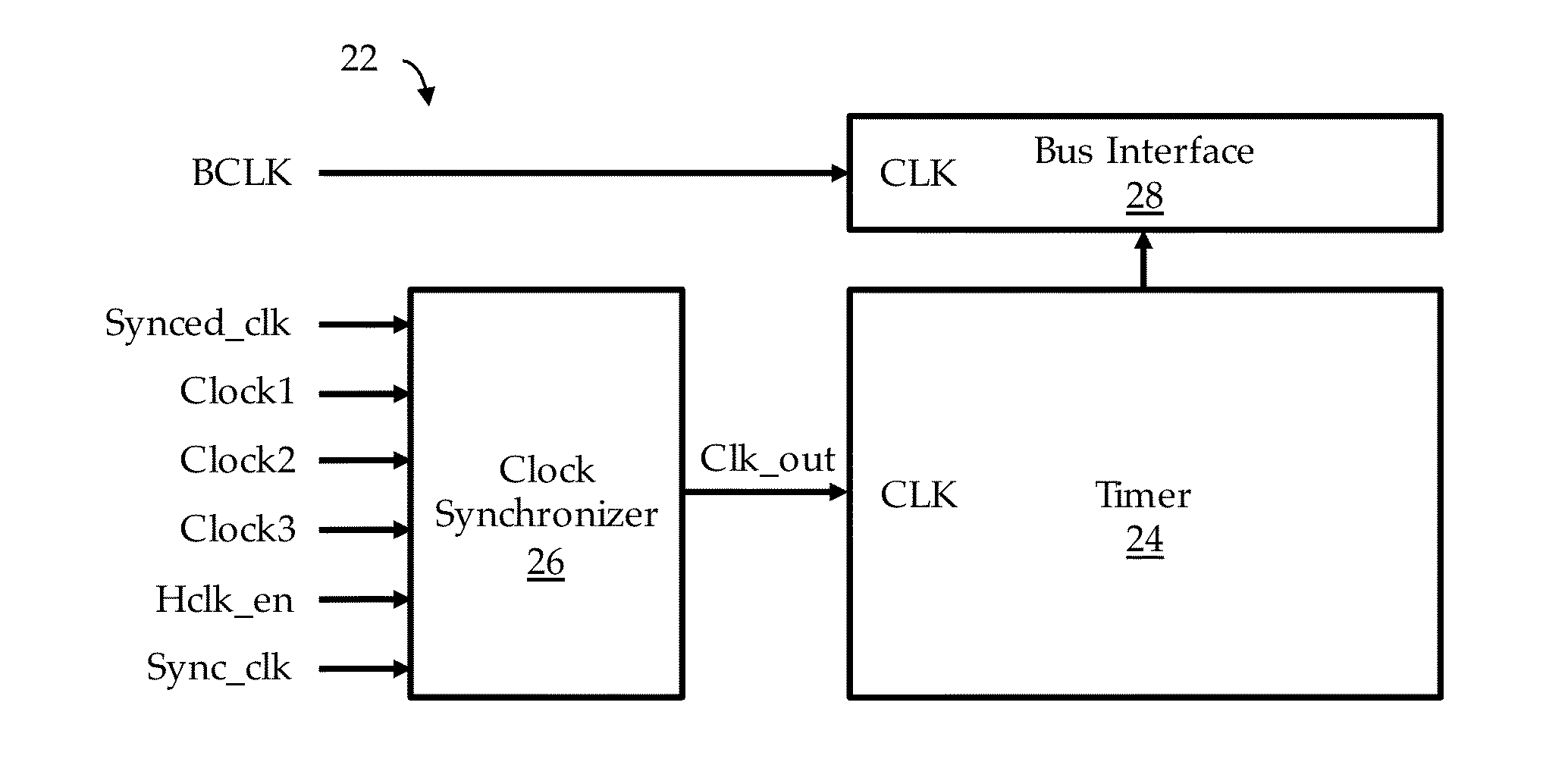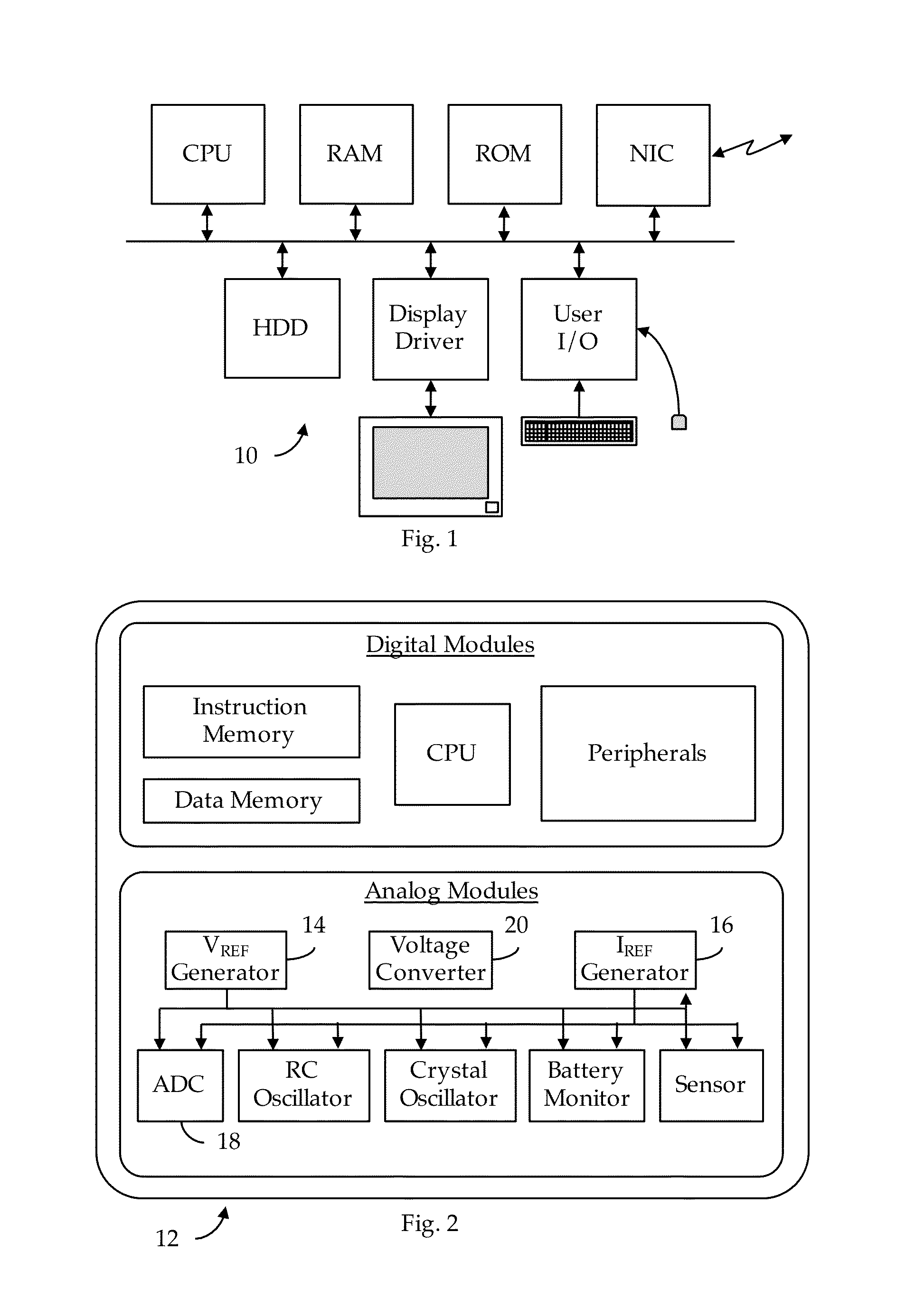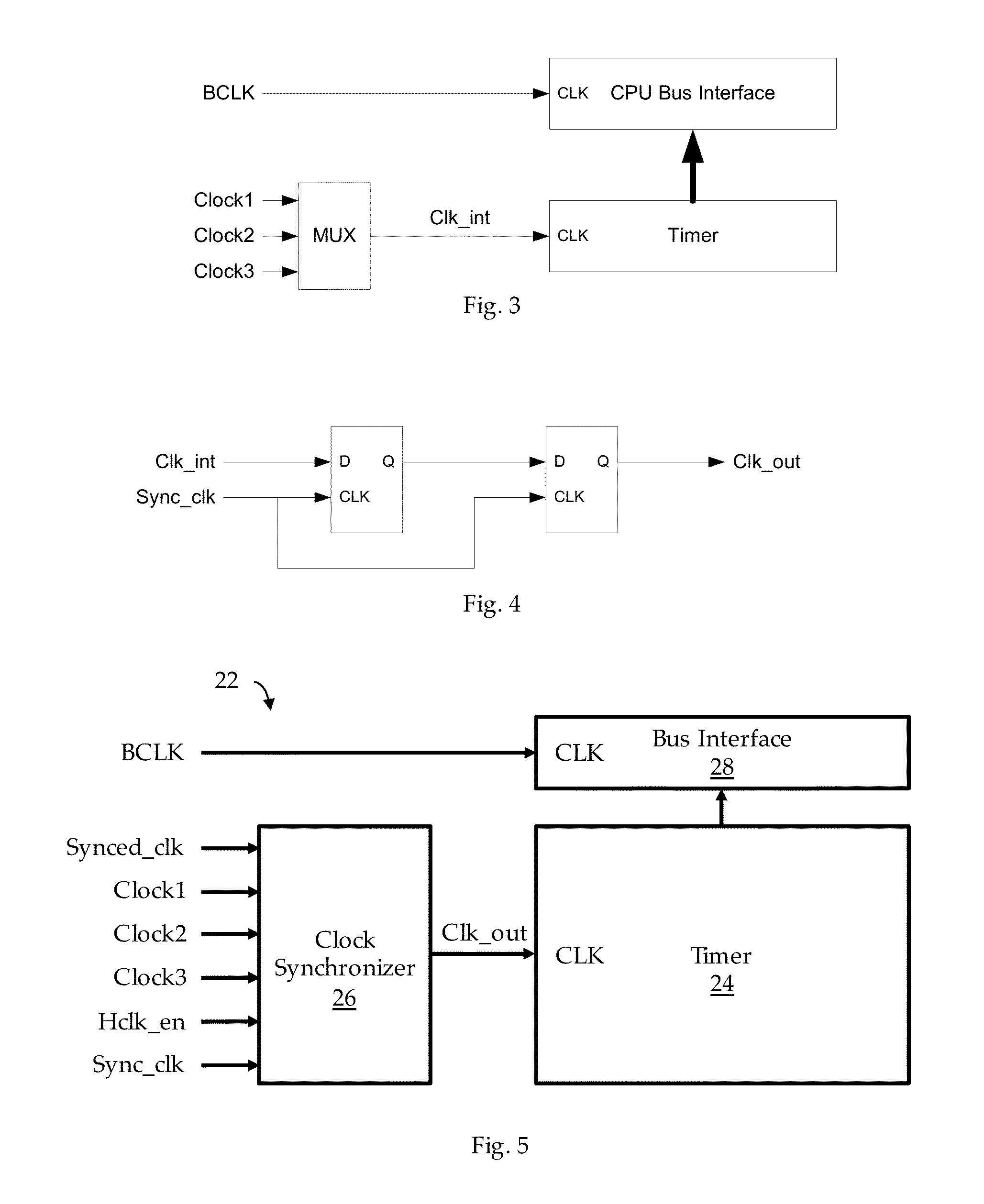Low Power Asynchronous Counters in a Synchronous System
- Summary
- Abstract
- Description
- Claims
- Application Information
AI Technical Summary
Benefits of technology
Problems solved by technology
Method used
Image
Examples
Embodiment Construction
Low Power Method for Precisely Reading an Asynchronous Counter
[0047]FIG. 5 illustrates, in block diagram form, a typical integrated timer facility 22 adapted to practice any of the several embodiments. Similar to the earlier discussion, here, the Timer 24 is an N-bit counter which may be loaded with some initial value, and which then counts clock pulses from a selected clock source. And as before, it is desirable that the value in the Timer 24 may be read at any time, even when the Timer 24 is being clocked. The clock synchronizer facility 26 provides the clock synchronizing means for Timer 24 to count and to provide the count data from the Timer 24 to the Bus Interface 28 even when the Timer 24 is being clocked, when Clock1, Clock2, and Clock3 are asynchronous to BCLK, and when BCLK is not active.
[0048]FIG. 6 illustrates, in block diagram form, a clock synchronization facility 26 according to one embodiment. The clock synchronization facility 26 includes mux 28, ASFLOP flip-flop fa...
PUM
 Login to View More
Login to View More Abstract
Description
Claims
Application Information
 Login to View More
Login to View More - R&D
- Intellectual Property
- Life Sciences
- Materials
- Tech Scout
- Unparalleled Data Quality
- Higher Quality Content
- 60% Fewer Hallucinations
Browse by: Latest US Patents, China's latest patents, Technical Efficacy Thesaurus, Application Domain, Technology Topic, Popular Technical Reports.
© 2025 PatSnap. All rights reserved.Legal|Privacy policy|Modern Slavery Act Transparency Statement|Sitemap|About US| Contact US: help@patsnap.com



